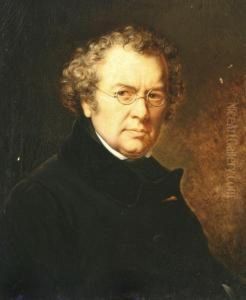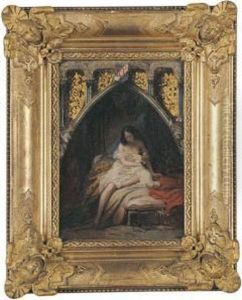Carl August Von Steuben Paintings
Carl August von Steuben, also known as Charles Auguste Guillaume Steuben, was a German-born French painter who is best known for his military scenes and his detailed portrayal of historical events. Born on April 18, 1788, in Bauerbach, Thuringia, in present-day Germany, Steuben was the son of the royal Prussian army captain Charles Louis von Steuben and his wife, Wilhelmine Elisabeth von Steuben. He moved to France at an early age and became a student of the French painter François Gérard, who was a prominent portrait painter during the Napoleonic era.
Steuben's career was significantly influenced by his interest in French history and his patronage under the French royal family. His works often reflected the military and political themes of his time. He gained recognition for his depictions of battles and was commissioned to produce works that glorified the military campaigns of Napoleon I. After the fall of Napoleon, Steuben did not lose favor and instead adapted to the changing political landscape. He became a painter for the restored French monarchy and created works that celebrated the glories of the French army under the Bourbon kings.
Among Steuben's notable works is 'The Battle of Poitiers,' which depicts the 1356 battle during the Hundred Years' War. His paintings were characterized by their attention to detail, vivid presentation, and the ability to convey the drama of historical moments. He also painted scenes from the American Revolution, such as 'The Siege of Yorktown,' showcasing his international perspective and interest in epochal events.
Steuben's style evolved over the course of his career, showing an adeptness at handling various subjects with skill and historical accuracy. He was a member of the Académie des Beaux-Arts and received the Legion of Honour, a prestigious French order, in recognition of his contributions to art. Carl August von Steuben died on November 21, 1856, in Paris. His legacy lives on through his historical paintings, which continue to be appreciated for their artistic merit and historical value.

